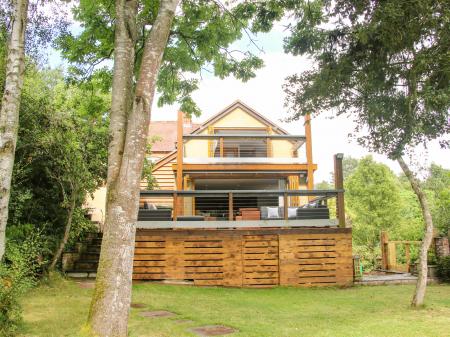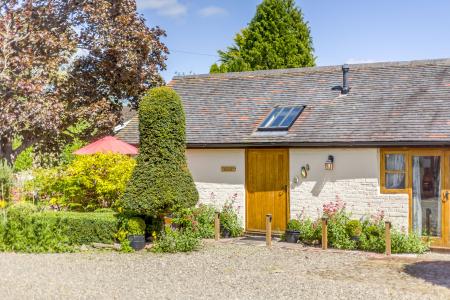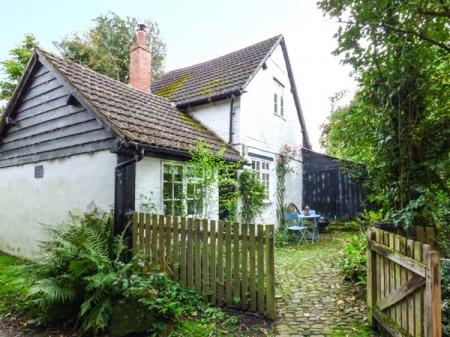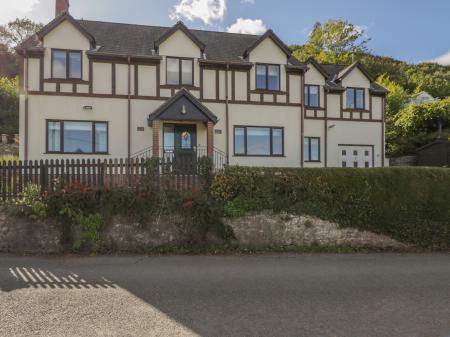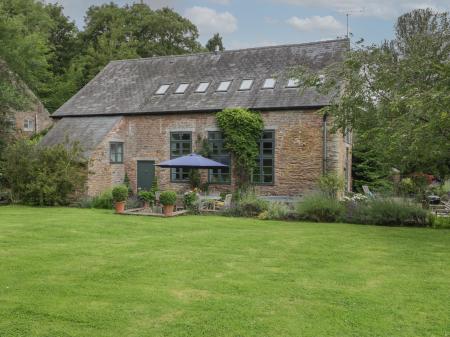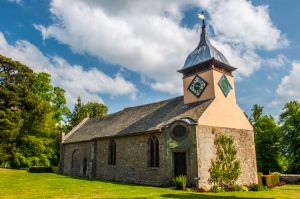
We do not know exactly when the church was built at Croft; the style of construction suggests a date in the early 14th century. This building was enlarged in 1515 and rebuilt using the earlier stones, particularly the 14th-century window tracery.
Historic Highlights
Several pieces of stained glass from the 14th-century church survived, including a scallop shell of St James and a sun in splendour symbol of the House of York. There are large sections of 15th-century tiles, decorated with heraldic symbols. These were almost certainly made at Malvern.
The chancel roof was rebuilt in the late 17th century when it was boarded and painted with clouds and gilded stars. At the same time painted and carved angel heads were added to the roof beams.

The Croft Tomb
The most interesting feature of the church interior is an impressive monument to Sir Richard Croft (died 1509) and his wife Eleanor. Lady Eleanor was the widow of Sir Hugh Mortimer, uncle of the Duke of York. She was in charge of running the household for the 'Princes in the Tower' when they were resident in Ludlow Castle. Sir Richard was Treasurer of the King's Household for Henry VII and died in the same year as the king.
Unlike many effigies of the period which depict people symbolically, the Croft effigies show the couple as elderly and are probably meant to be accurate portraits.
Sir Richard lies in full armour, a Croft lion at his feet. Two canopies extend over the effigy heads, decorated with statues of saints in niches. At the base of the tomb are a row of shield bearers in niches. The quality of carving on the Croft tomb has been compared to the exquisite work at Henry VII's chapel at Westminster Abbey. Considering the ties between the Crofts and the king, it would not be surprising if the same masons worked on both.
The tomb is also similar to Prince Arthur's tomb in Worcester Cathedral. We know that Sir Richard attended the prince's funeral, so perhaps he was struck by the royal tomb and determined to create something similar for himself at Croft.









 We've 'tagged' this attraction information to help you find related historic attractions and learn more about major time periods mentioned.
We've 'tagged' this attraction information to help you find related historic attractions and learn more about major time periods mentioned.